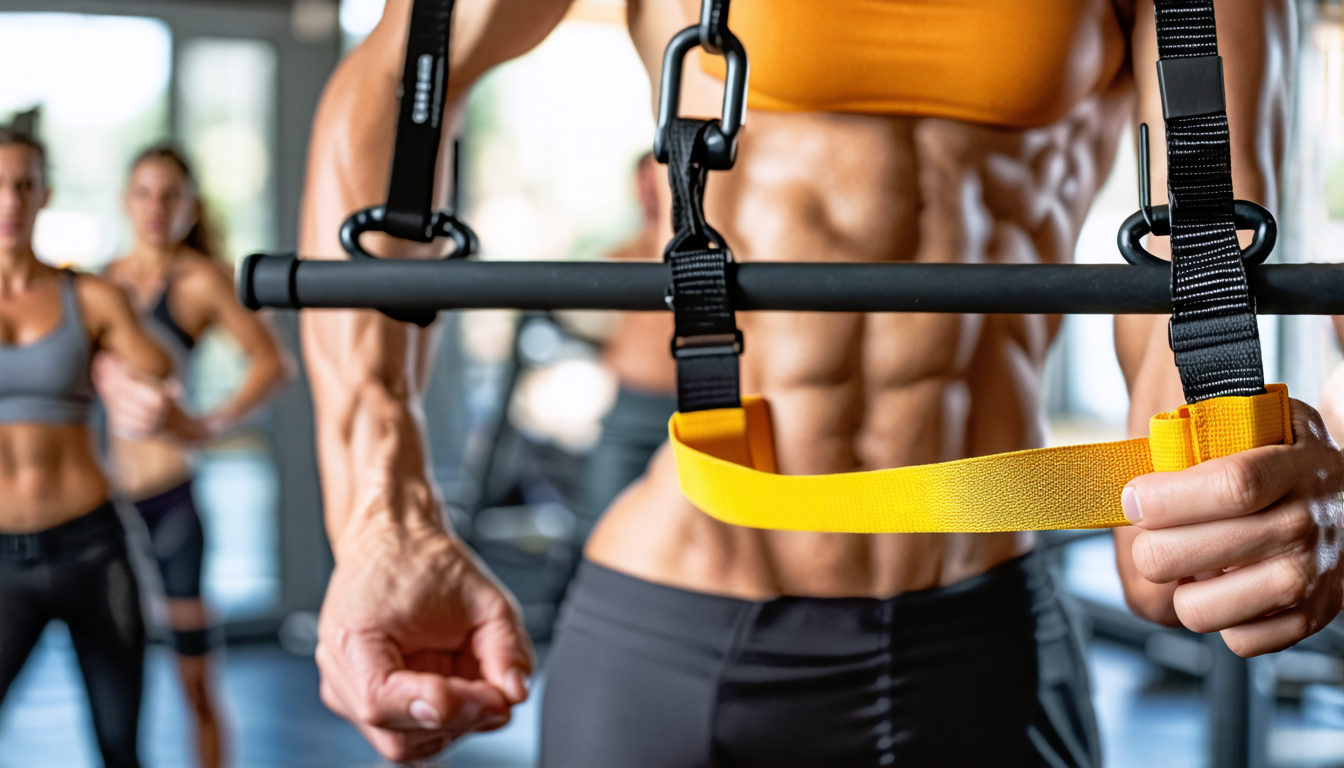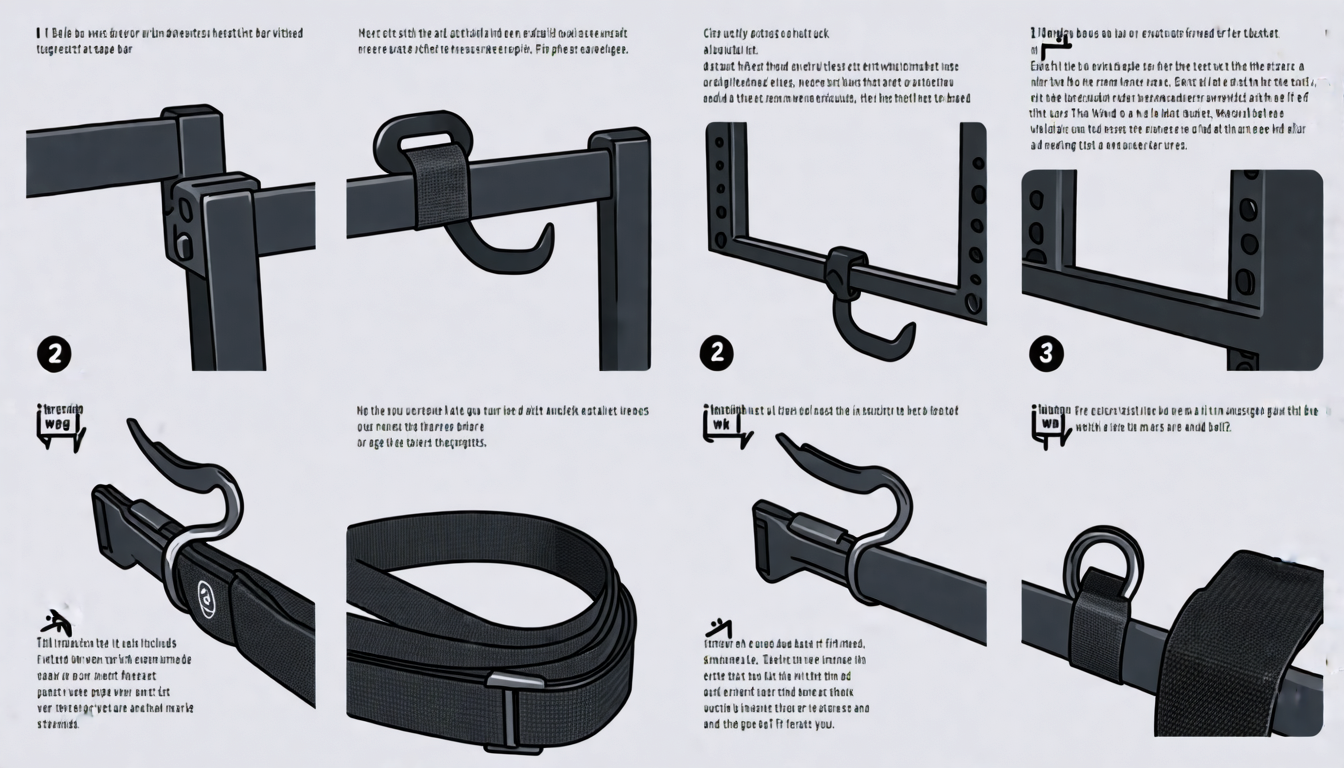If you’ve been looking to enhance your home fitness setup, installing additional hooks or straps on your fitness bar can be a game-changer. Not only do these simple modifications open up a new world of exercise possibilities, but they also allow for improved grip and targeted muscle training that can take your workouts to the next level. Whether you’re dealing with a ceiling-mounted, wall-mounted, or free-standing fitness bar, understanding how to properly install these accessories is crucial for maximizing their benefits and ensuring your safety during workouts. This comprehensive guide is designed to walk you through the step-by-step process of installing additional hooks or straps on your fitness bar, detailing the essential tools and materials required, and highlighting the importance of adhering to safety precautions to prevent injuries and equipment damage. Moreover, we’ll delve into the numerous advantages of incorporating these accessories, offering expert advice on maintaining them for longevity and effectiveness, and helping you choose the right type for your unique fitness needs. Elevate your home fitness experience by learning the best practices for using hooks or straps on your fitness bar and ensure your home gym is equipped to support a diverse and effective workout regimen.
Step-by-Step Guide to Installing Additional Hooks or Straps on Your Fitness Bar
Installing additional hooks or straps on your fitness bar can significantly enhance your home workout experience by adding versatility and increasing the number of exercises you can perform. Whether you have a ceiling-mounted, wall-mounted, or free-standing fitness bar, the following guide will help you attach these accessories safely and effectively.
Essential Tools and Materials Needed for the Installation Process
- Drill and Drill Bits: A power drill with appropriate-sized bits for making precise holes without damaging the bar or mounting surface.
- Measuring Tape: Necessary for accurate placement of the hooks or straps to ensure symmetrical and efficient installation.
- Screwdriver: A suitable screwdriver for securing screws firmly, preventing loose installations.
- Marker or Pencil: To mark exact positions where holes will be drilled.
- Level Tool (Spirit Level): Ensures hooks or straps are installed evenly, important for balance during workouts.
- Safety Glasses and Gloves: Essential protective gear during the installation process.
- Anchors and Screws: Choose the correct weight-bearing anchors and screws depending on where the fitness bar is installed (ceiling, wall, or free-standing).
- Hooks or Straps: Select high-quality, durable hooks or straps tailored to your workout requirements.
- Torque Wrench (Optional): To avoid over-tightening screws which might compromise the installation stability.
Detailed Step-by-Step Guide for Different Types of Fitness Bars
Ceiling-Mounted Bars
- Locate Ceilings Studs: Use a stud finder to locate ceiling joists which will offer the most support.
- Mark Drill Points: Use your measuring tape and marker to mark where the hooks will be installed evenly spaced along the bar.
- Drill Holes: With your safety glasses on, drill holes into the marked points. Ensure the holes are slightly smaller than the anchors for a tight fit.
- Insert Anchors: Hammer in anchor screws securely into the ceiling holes.
- Attach Hooks or Straps: Screw the hooks or loops for the straps into the anchors, ensuring they are tight.
- Test Stability: Gently pull on each hook or strap to ensure they are installed securely before starting your workout.
Wall-Mounted Bars
- Assess Wall Strength: Verify that the wall can support additional weight and identify solid spots using a stud finder.
- Mark Positions: Engage your level tool and measuring tape to mark balanced positions for the hooks or straps.
- Bore Initial Holes: Carefully drill holes at each marked spot without exceeding wall depth to avoid structural damage.
- Install Wall Plugs: Place the wall plugs into the drilled holes for enhanced grip.
- Affix Hooks/Straps: Attach your hooks or straps by screwing them into the wall plugs and ensure they’re level.
- Conduct a Safety Check: Test the hooks by hanging weight equivalent to your intended use to confirm robustness.
Free-Standing Bars
- Check Stability: Ensure the base of the free-standing bar is stable on the ground.
- Plan Hook/Strap Placement: Use your measuring tape to decide where on the bar the hooks or straps should be attached.
- Attach Hooks Directly: Most free-standing bars allow direct attachment using C-clamps or adjustable straps. Secure them tightly to prevent sliding.
- Test for Security: Once attached, check the security of the setup by lightly pulling to ensure they can hold the required weight.
Safety Precautions to Consider
- Verify Load Capacity: Always check that the hooks or straps and the supporting structure (wall, ceiling, or bar) can handle the maximum expected weight.
- Use Quality Materials: Inferior quality hooks, straps, or fixtures might increase failure risk. Opt for high-quality, verified accessories.
- Regular Inspection: Periodically check the stability and integrity of the attached hooks or straps for any loosening or wear.
- Follow Manufacturer Instructions: Adhere to any specific guidelines or limitations provided with your fitness bar or the accessories.
- Ensure Proper Use: Avoid using the hooks or straps for exercises they aren’t designed for, such as overly dynamic movements like swings, if not suitable.
Successfully and securely installing additional hooks or straps on your fitness bar can greatly extend the variety and effectiveness of your workouts at home. By following this detailed guide, you can ensure a safe and robust setup, enhancing your home fitness bar’s functionality for your fitness routine.

Benefits and Best Practices for Using Hooks or Straps on Fitness Bars
Adding hooks or straps to your home fitness bar can significantly enhance your workout routine, making your fitness equipment more versatile and targeted to your fitness goals. Whether you aim to improve your grip, diversify your exercises, or focus on specific muscle groups, incorporating these accessories can be a game-changer. Here’s a deeper dive into the benefits and best practices for using hooks or straps on your fitness bar:
Advantages of Using Additional Hooks or Straps
1. Enhanced Grip: Hooks and straps can provide a firmer and more comfortable grip during workouts. If you’re performing exercises like pull-ups or chin-ups, a solid grip is essential for maximizing performance and preventing slips, particularly when your hands are sweaty. Using straps can also reduce hand fatigue, enabling you to maintain better form and execute more reps.
2. Increased Exercise Variety: By installing hooks or straps, your home fitness bar becomes a foundation for a myriad of exercises. You can attach resistance bands, TRX systems, or even gymnastics rings, allowing you to engage in suspension training. These alternatives offer the ability to perform exercises like rows, chest presses, and tricep extensions, which might not have been possible before with a standard bar setup.
3. Targeted Muscle Training: With hooks or straps, you can adjust the angle and position of exercises to focus on specific muscle groups, promoting better muscle development and strength gains. For instance, using straps to perform incline pull-ups will activate different sections of the back and shoulders compared to regular pull-ups.
Maintenance and Inspection Tips
To ensure the longevity and safety of your hooks or straps, regular maintenance and inspections are crucial. Consider the following tips:
- Regular Inspection: Check your hooks and straps for wear and tear before each use. Look for signs of fraying, cracks, or any weakened areas that might compromise safety.
- Proper Cleaning: Sweat and dust can accumulate on straps over time. Wipe them down with a damp cloth and mild detergent to maintain their condition and lifespan.
- Storage: When not in use, store your hooks and straps in a dry, cool place to prevent damage from moisture or extreme temperatures. Avoid leaving them exposed to direct sunlight, as UV rays can degrade the materials.
Expert Recommendations on Selecting the Right Hooks or Straps
Choosing the right type of hooks or straps is vital to match your specific workout needs and fitness goals. Here are some expert recommendations:
- Understand Your Goals: Consider what you wish to achieve by using these accessories. If your aim is to increase your grip strength or support heavy lifting, lifting hooks might be more appropriate. For those interested in bodyweight exercises or functional training, suspension straps could be the way to go.
- Material and Design: Opt for hooks or straps made from high-quality, durable materials that can withstand repeated stress without losing their integrity. Ensure they feature quick-adjust mechanisms for ease of use and secure attachment.
- Weight Capacity: Ensure any hooks or straps can comfortably handle the load you intend to put on them. Check manufacturer specifications regarding weight limits to avoid equipment failure.
- User Comfort: Look for designs that include padded areas or ergonomic features, contributing to a comfortable experience that minimizes pressure points during workouts.
Incorporating additional hooks and straps into your home fitness bar setup not only maximizes the usage of your existing equipment but also broadens the scope of exercises you can perform, helping you meet your fitness goals more effectively. By selecting the right accessories and maintaining them properly, you create a safe and dynamic training environment in your own home. Remember, the key is to adapt your fitness tools to your needs, making every workout session as productive and enjoyable as possible.
In conclusion, installing additional hooks or straps on your fitness bar can significantly elevate your at-home workout experience. By following the step-by-step guide provided, you can ensure a safe and secure installation, whether you have a ceiling-mounted, wall-mounted, or free-standing bar. Utilizing the appropriate tools and materials will help facilitate the process, while adhering to crucial safety precautions will prevent potential injuries and safeguard your equipment. The addition of these accessories introduces a variety of benefits, including enhanced grip, a broader range of exercises, and more focused muscle training. By integrating hooks or straps, your fitness routine can become more dynamic and tailored to your individual goals.
To maximize the utility and durability of your fitness equipment, it’s essential to regularly inspect and maintain the hooks and straps. This vigilance will help prevent wear and tear, ensuring your workouts remain both effective and safe. Moreover, selecting the right type of hook or strap is crucial, with expert recommendations varying depending on your workout objectives. Whether you’re aiming for strength training, flexibility enhancement, or balance improvement, choosing the right accessories will further connect your fitness bar to your needs. Ultimately, this integration can transform your home fitness space, making it more versatile and aligned with your personal fitness journey.

